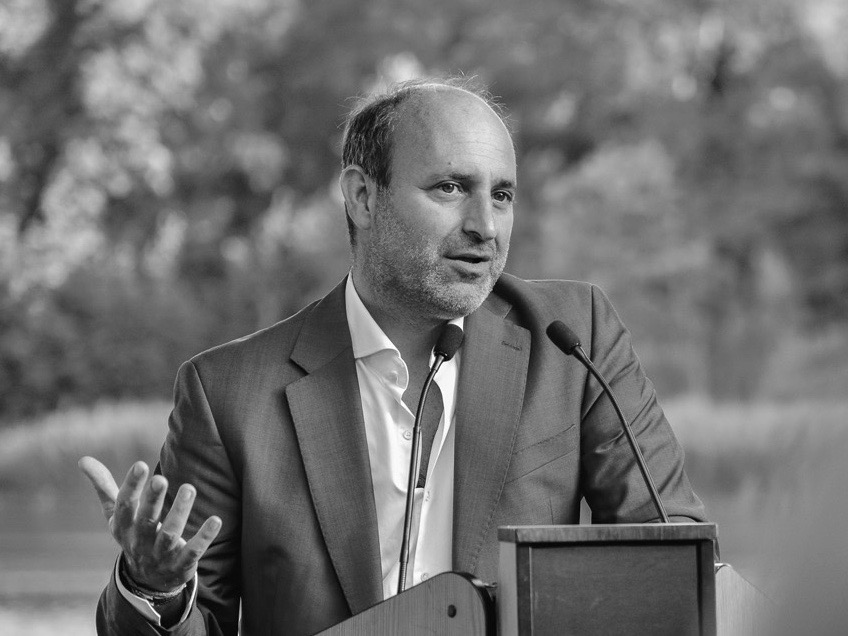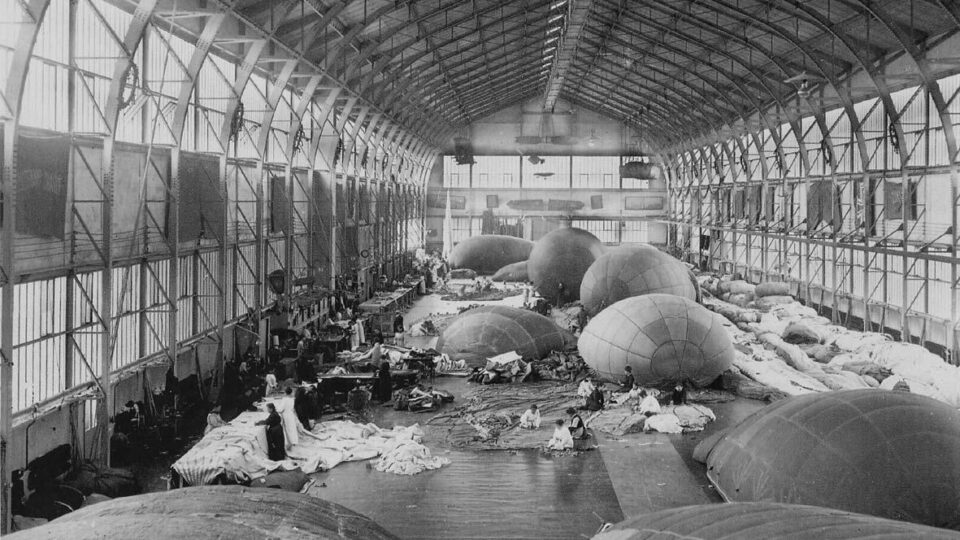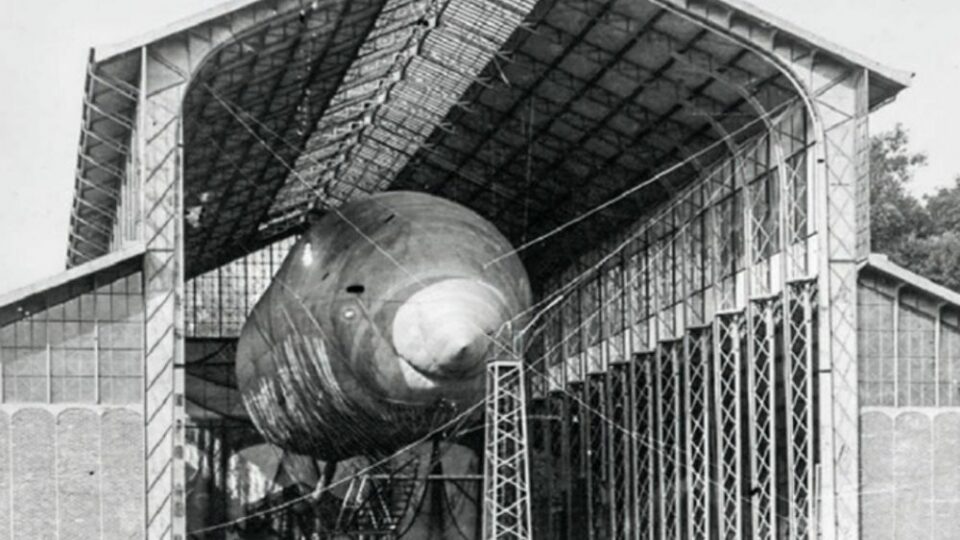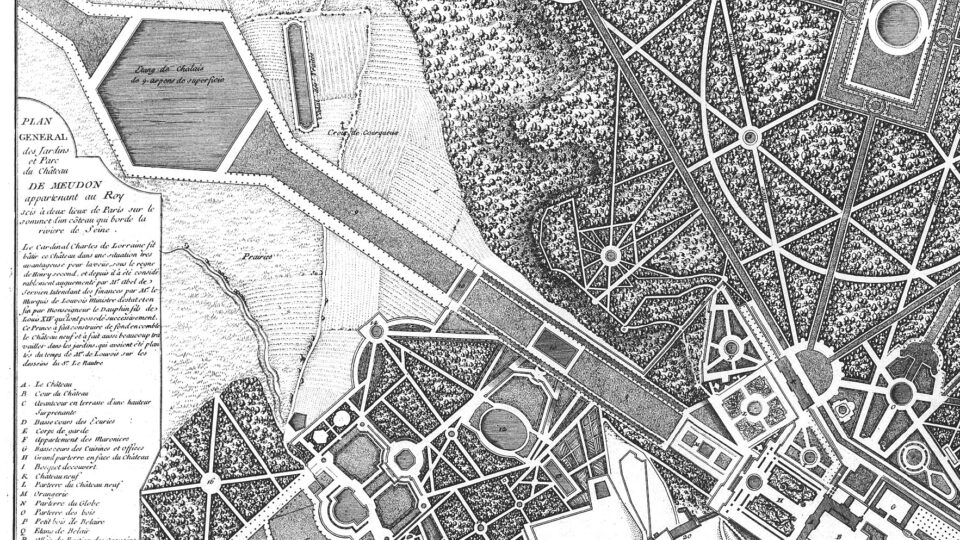L’histoire du lieu
Quelques dates clés
- 1879 : le Hangar Y voit le jour, construit à partir d’éléments de la galerie des machines de l’Exposition universelle
- 1884 : le bâtiment accueille le premier vol mondial d’un dirigeable en circuit fermé
- 1914-1918 : pendant la Première Guerre Mondiale, le bâtiment est investi pour construire des ballons captifs
- 1921 : à la suite de la victoire des Alliés, le bâtiment accueille le premier musée de l’Air et de l’Espace pour mettre en avant le triomphe militaire de la France
- 1936-1973 : le hangar devient lieu de conservation et de présentation des réserves du musée de l’Air et de l’Espace
- 1973 : le musée de l’Air et de l’Espace déménage ses collections sur le site de l’aéroport du Bourget, où il se trouve encore à ce jour
- 1981 : le Hangar Y ferme ses portes au public et sera inexploité pendant quarante ans
- 1990 : le Hangar Y devient propriété du ministère de la Culture
- 2000 : le Hangar Y est classé au titre des monuments historiques
- 2018 : l’État français signe son premier BEAV avec le groupe Culture et Patrimoine en vue de restaurer ce site pour en faire une destination à la croisée de l’histoire, de la culture et des sciences
- 2020 : L’entrepreneur et grand mécène de la culture, Frédéric Jousset, s’associe au projet et permet de reconvertir ce monument historique en un lieu culturel et événementiel, polyvalent et ambitieux, qui accueillera une riche programmation pluridisciplinaire, participative et inclusive
- 2022 : lors d’une pré-ouverture organisée en octobre pendant la foire Paris+, le Hangar Y dévoile une partie de ses nouveaux espaces et présente une première programmation artistique qui rassemble 10 000 visiteurs en 3 jours
- Printemps 2023 : le bâtiment et le domaine du Hangar Y rouvrent leurs portes après quarante ans de fermeture et plus de deux ans de travaux de rénovation
UN SITE UNIQUE ET HISTORIQUE INTÉGRALEMENT RÉNOVÉ
Déployé sur trois pôles majeurs – le hangar, le parc et les sous-bois –, le site du Hangar Y porte un héritage séculaire ancré dans l’histoire de notre pays. Depuis le XVIe siècle, le territoire sis dans le sud de Meudon et à l’orée de sa forêt domaniale a en effet accueilli des innovations majeures sur le plan architectural, aéronautique et artistique, que la réouverture au public au printemps 2023 ambitionne de revaloriser.
Avec sa structure en fer et ses briques apparentes, sa verrière qui baigne son intérieur de lumière et ses lignes courbes et symétriques, le Hangar Y est un emblème de l’architecture industrielle de la fin du XIXe siècle. En 1878, alors que Paris vient de clore sa 3e Exposition Universelle sur le Champ-de-Mars et de démonter ses constructions éphémères, un tronçon de la Grande Galerie des Machines est réutilisé pour bâtir un hangar à dirigeables à quelques mètres de la forêt de Meudon. Car à une époque où la France développe considérablement son arsenal de guerre, la recherche de vastes espaces pour s’adapter aux dernières avancées de l’armée se fait de plus en plus croissante.
C’est ainsi que le Hangar Y voit le jour en 1879. Imaginée par l’architecte Henri De Dion, professeur de Gustave Eiffel à qui l’on doit la fameuse tour du même nom, la structure qui sert à l’édification du bâtiment offre de multiples avantages. Son aménagement comportant une nef centrale et une mezzanine de chaque côté permet notamment de traverser aisément le bâtiment dans toute la longueur – 70 mètres ! – et de l’appréhender sous différents points de vue. Grâce à sa large verrière et ses 23 mètres de hauteur sous plafond, le lieu bénéficie d’une grande luminosité tout en étant préservé des fortes chaleurs par son exposition nord et les nombreux arbres qui l’entourent.
Un laboratoire d’innovation aéronautique
Premier hangar à dirigeables au monde, le Hangar Y (nom défini d’après la parcelle militaire « Y » où le bâtiment a été reconstruit) a été l’un des berceaux de l’aéronautique française de la fin du XIXe siècle à la Grande Guerre. C’est dans cet “établissement aérostatique de Chalais Meudon”, tel qu’on l’appelait à l’origine, qu’a eu lieu en août 1884 le premier vol à succès au monde d’un dirigeable en circuit fermé, conçu par Charles Renard et Arthur Krebs. Réalisé à partir d’énergie décarbonée, cet aérostat entraîne à l’époque une véritable révolution dans le domaine des transports :à la suite de ces décennies de recherche, les premiers dirigeables pourront ensuite dès le début du XXe siècle quitter les circuits fermés pour s’envoler enfin dans les airs.
Jusqu’à la fin de la Première Guerre Mondiale, le bâtiment meudonnais est exploité pour tester et fabriquer des dirigeables, ballons captifs et ballons d’observation. À la suite de la victoire des Alliés en 1918, il devient trois ans plus tard l’hôte du premier musée de l’Air et de l’Espace, permettant au public de découvrir des trésors de l’aéronautique et leur rôle dans la stratégie de défense de la France pendant le conflit. En 1936, une partie du musée est transvasée dans le 15e arrondissement parisien avant que celui-ci ne soit fermé par les Allemands. Ses collections seront alors rapatriées au Hangar Y pour y être conservées jusqu’en 1973, avant d’être à nouveau déplacées sur le site du Bourget où le musée s’installera définitivement et rouvrira ses portes.
Un jardin d’exception imaginé par le paysagiste de Versailles
Installé sur une partie du vaste domaine du château royal de Meudon qui fut détruit par plusieurs incendies avant d’être partiellement reconstruit, le site du Hangar Y contient un fragment du jardin historique imaginé par André Le Nôtre, paysagiste officiel du roi Louis XIV, sur la commande de ce dernier. Durant l’année 1680, le maître d’œuvre des célèbres jardins du château de Versailles a construit une perspective longue de 3 kilomètres qui reliait le château à la forêt de Meudon.
Au sein du parc de Chalais-Meudon, dont la zone investie par le Hangar Y s’étend désormais sur 9 hectares, une partie du jardin à la française du XVIIe siècle a été conservée. Ouverte sur l’horizon grâce à l’élagage des arbres en lignes droites, sa Grande Perspective offre une vue imprenable sur la verdure et permet d’apprécier la symétrie des formes géométriques qui délimitent la végétation et les chemins, ou encore la pelouse très ordonnée du Tapis Vert – autant d’éléments emblématiques du style classique.
Quelques décennies avant l’intervention de Le Nôtre, un grand bassin hexagonal avait été aménagé dans le parc. Restauré depuis, le bassin de Chalais traversé par le Tapis Vert offre aujourd’hui en plein cœur du site un cadre paisible, bordé par sa roselière historique, ses pontons qui servaient autrefois aux pêcheurs, et entouré de plusieurs bancs propices à des moments de détente.
A l’initiative du projet
Didier Gouband
Passionné par l’histoire et le patrimoine de France mais également par sa démocratisation, Didier Gouband a fait ses armes dans la plus grande agence événementielle du marché puis créé la première société de mise en scène gastronomique en 2001, qu’il dirige pendant six ans. Après un retour à la communication événementielle où il occupe des postes de direction générale, l’homme d’affaires décide progressivement d’associer ses compétences en gestion d’événements et d’adaptation à tout type de publics avec son amour pour les lieux artistiques et historiques. Ainsi, après s’être associé au réalisateur Luc Besson dans la gestion de la Cité du cinéma par le biais de sa filiale BLUE Event, il crée en 2016 le groupe Culture et Patrimoine, visant à proposer une offre touristique inédite en redonnant vie à des hauts lieux du patrimoine français. C’est à travers cette activité qu’il entreprend dès 2016 de redonner vie au Hangar Y à Meudon. Avec l’accord de l’État français, son groupe signe en 2018 un bail de 35 ans pour réhabiliter le lieu et en faire une destination polyvalente, événementielle et culturelle, où se rencontrent art et culture, sciences et innovations, et bien sûr nature et loisirs. En 2020, lors d’une rencontre avec Frédéric Jousset, les deux hommes partagent leurs valeurs et ambitions pour le projet Hangar Y et décident de s’associer. Frédéric Jousset devenant investisseur majoritaire, Didier Gouband pouvant se consacrer pleinement à l’exploitation du site.

Frédéric Jousset
Entrepreneur, aventurier et philanthrope, Frédéric Jousset a entamé sa carrière dans le marketing dans le domaine de la cosmétique avant de cofonder en 2000 Webhelp, société leader dans l’externalisation de la gestion de l’expérience client. Propriétaire du groupe média Beaux-arts Magazine, ce grand amateur d’art et de sensations fortes crée en 2019 la fondation internationale Art Explora, dont l’objectif majeur est de démocratiser l’accès à la culture au plus grand nombre à travers de plusieurs actions : le bateau musée ArtExplorer qui sillonnera la Méditerranée dês fin 2023, des résidences d’artistes à Paris et bientôt à l’étranger, un prix européen en partenariat avec l’Academie des beaux-arts pour les initiatives de démocratisation de l’art ou encore le développement de plateformes numériques pédagogiques et ludiques. En 2020, l’homme d’affaires et mécène lance le fonds d’investissement à impact ArtNova, consacré aux industries culturelles et créatives et au patrimoine. Cet ainsi qu’il s’associe au projet du Hangar Y et permet de reconvertir ce monument historique en un lieu culturel et événementiel, polyvalent et ambitieux, qui accueillera une riche programmation pluridisciplinaire, participative et inclusive.

Un lieu réhabilité dans le respect de son histoire et son environnement
Pendant quarante ans, le Hangar Y reste désaffecté et fermé au public, n’ouvrant ses portes qu’à quelques rares occasions. Toutefois, le bâtiment historique intéresse le gouvernement français : en 1990, le ministère de la Culture alors piloté par Jack Lang en acquiert la propriété, avant que le bâtiment ne soit classé monument historique dix ans plus tard, à l’image du domaine national de Meudon. Si un projet de restauration de la nef est entamé à la fin des années 2000 et que le toit est restauré en 2008-2009, il faudra attendre 2012 pour que Didier Gouband, président du groupe Culture et Patrimoine, n’en fasse la découverte. Séduit par ce lieu exceptionnel bien qu’abîmé par les années, il y voit alors un grand potentiel à exploiter.
Après avoir traversé les siècles, le domaine patrimonial délimité par le Hangar Y est le premier en France à faire l’objet d’un BEAV (bail emphytéotique administratif de valorisation) actant un accord entre l’État français et des structures privées, signé en 2018 pour une période de 35 ans. En 2020, l’entrepreneur et grand mécène de la culture, Frédéric Jousset, s’associe au projet et permet de reconvertir ce monument historique en un lieu culturel et événementiel, polyvalent et ambitieux, qui accueillera une riche programmation pluridisciplinaire, participative et inclusive. La rénovation du site par le groupe VINCI Immobilier a été réalisée avec l’appui et l’expertise de la DRAC et des Ateliers de France, qui supervise la restauration de monuments historiques.
L’ensemble de la rénovation du site a été pensé pour préserver l’environnement naturel, respecter l’histoire du lieu et être le moins énergivore possible. Afin de maintenir le hangar à une température convenable, par exemple, le recyclage de l’air s’y fait à l’air froid, permettant de circuler dans un espace agréable et aéré en toutes circonstances.
Le réaménagement du parc et du bassin s’inscrit quant à lui dans une démarche plus globale initiée par le ministère de la Culture et la mairie de Meudon pour l’ensemble du domaine national de la ville. Celle-ci vise à redonner vie à la fameuse perspective longue de 3 kilomètres tracée il y a plus de 300 ans par André Le Nôtre, dont une partie traverse le site du Hangar Y.




